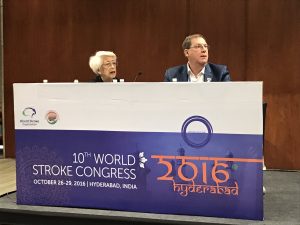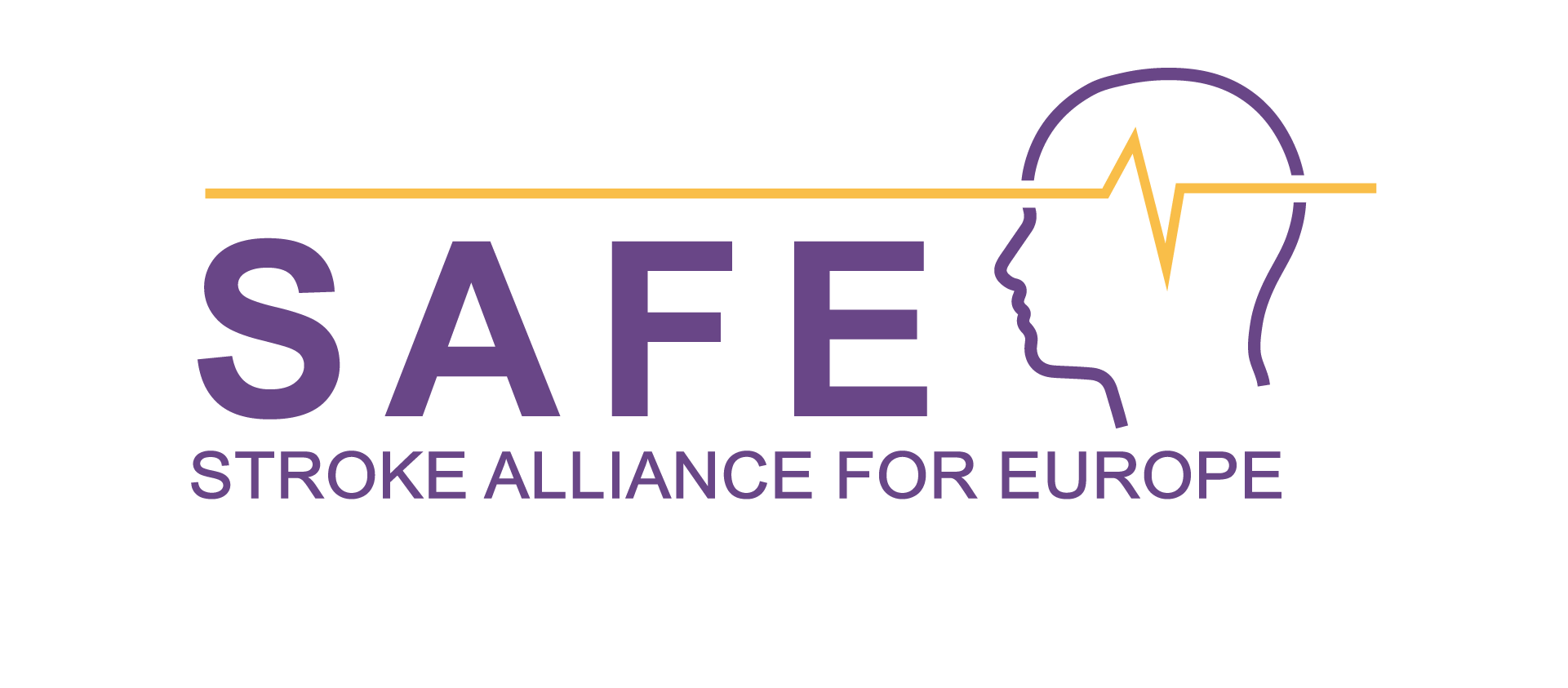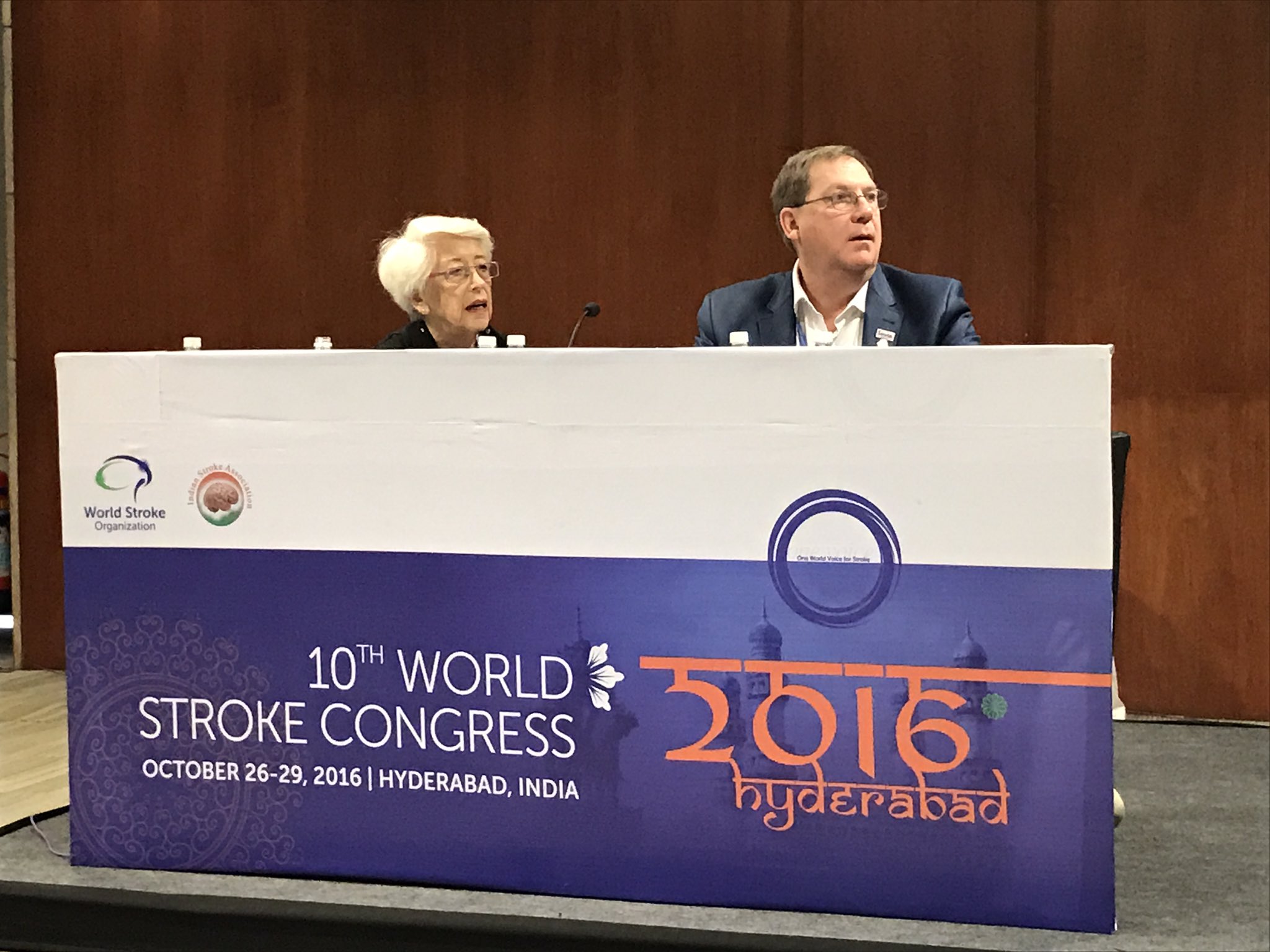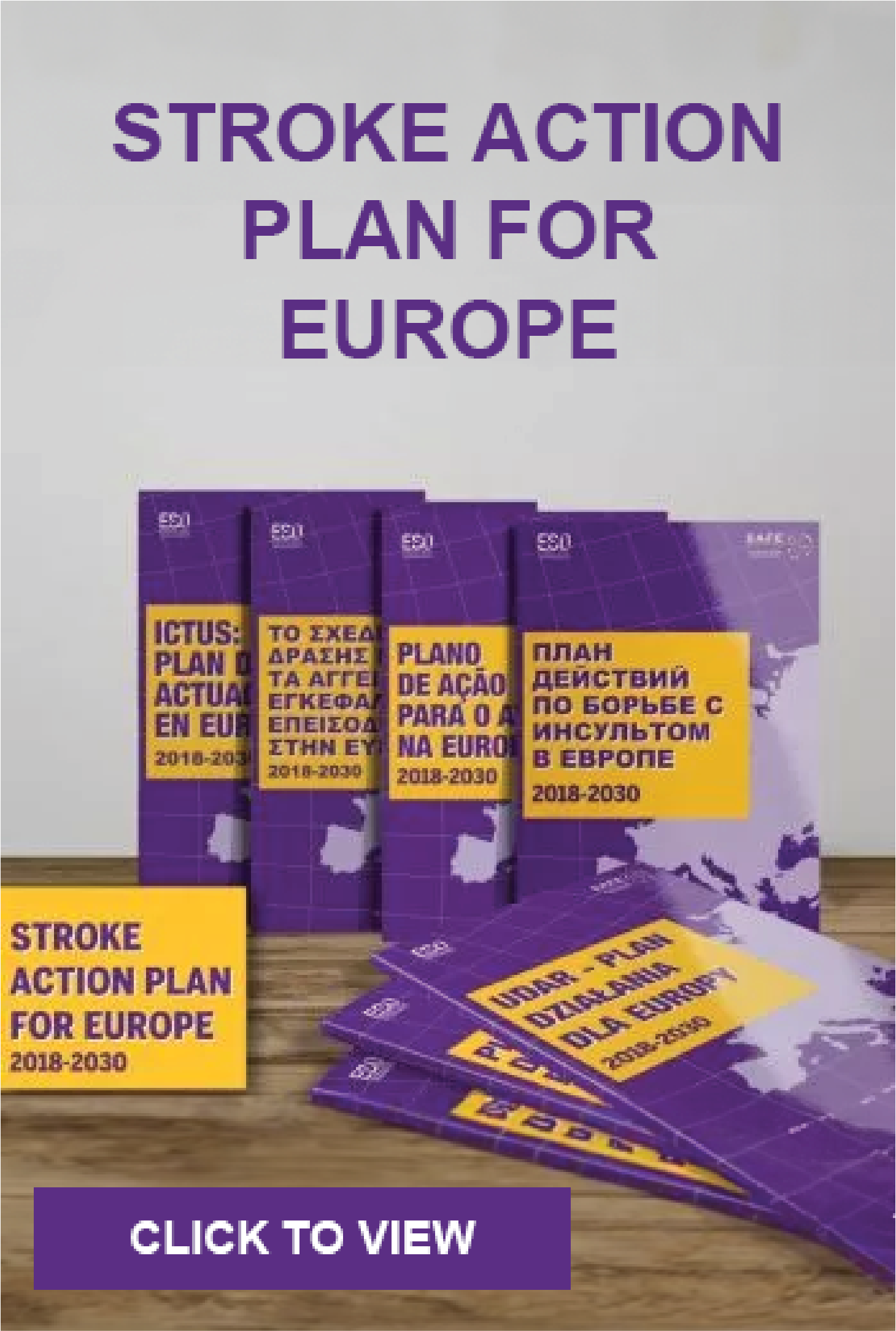President and vice president of SAFE co-chairing self management in stroke session at WSO Congress in Hyderabad, India.
Three examples of studies and digital programs were presented at an early morning lecture session on “Stroke support organisations and Self Management”.Jon Barrick, president of Stroke Alliance for Europe and Sandra Levy, vice president co-chaired the event. Despite the fact that two of the original speakers were unable to attend, the audience was very responsive to the information presented. In her absence, Jon briefly summarised Stephanie Taylor’s excellent practical, systematic review of self-management support for long term conditions- PRISMS. The PRISMS study is investigating the safety and efficacy of IV alteplase in acute ischemic stroke in (AIS) patients whose symptoms are mild. The study consists of a screening assessment, randomization and treatment, a 30-day follow-up phone call and a 90-day follow-up in-person visit with the study physician. Further details of the study can be found on-line.

Jon Barrick and Sandra Levy
This was followed by Jon’s comprehensive survey of Stroke Self-Management in the Digital Age. In contrast to commonly accepted beliefs that online medical interventions are rigid and impersonal, Jon described the flexibility and personalisation of programs, particularly of the Stroke Association.
A third presentation was made by Professor Valery Feigin, on “Findings from the Stroke Self-Management and Rehabilitation Trial (SMART-DVD: An International, Multi-Site Pilot Trial”, describing initial findings from a multi-centre three month intervention trial.
Due to the high costs of rehabilitation following a stroke, survivors at the best receive only 2-3 months of treatment, whereas ongoing rehabilitation for extended periods is the necessary requirement for optimal results. Consequently alternative cost-effective tools for continuation of rehabilitation treatment are being explored as in the SMART Trial. This followed the application of a role model observational learning tool on DVD for stroke survivors from 9 different sites throughout the world. The six segments of the topics addressed included an understanding of stroke, early care and hygiene, rehabilitation exercises, moving around, coping with stroke aftermath and experience of caregivers.
At the end of a three month period, comparisons were made with a “usual care group” and feedback was elicited from the 66 subjects.
It was concluded that self-management strategy is feasible on an international scale. Efforts are required to better meet individual needs of each patient and their caregivers and to adapt to meet changing needs throughout the recovery process. Additional topics within the program were suggested, such as mental and emotional well-being, speech training, coping with frustration and use of simpler, sub-titled language should be used. A particularly useful suggestion was for stroke survivors to watch the DVD just before leaving the hospital when doing family conference, so family knows what to do and expect. Overall, almost 50% reported at least one benefit from the program.
The final speaker was a stroke survivor from India, who, despite considerable speech difficulties following his stroke, inspired the audience with his courage and unfailing motivation to rehabilitate himself.
The participation of a stroke survivor speaker amongst the 2,400 stroke professionals attending the biennial Congress was a well received addition.
In general there was a feeling amongst stroke support organisation participants that efforts are required to ensure that the patients’ voice is amplified at such an international event.
About the 10th World Stroke Congress (WSC)
This year’s, the 10th World Stroke Congress (WSC) was held in Hyderabad, October 26-29, 2016.
The history of India can be traced back to the Indus Valley civilization (2500 BC). India has a rich cultural heritage and diversity in language, dress, religious places, flora and fauna and varied delicious cuisines. India is an agricultural country but has made a rapid growth over the last few decades in industries, information technology and in the field of science. Hyderabad, the conference venue, is the meeting point of the central and southern part of India. It was ruled by the Mughals and the Nizams and the architectural beauty is seen in Charminar, Golkonda fort, Falaknuma and Chowmahalla palaces.
Stroke is a major cause of disability and death in India. A large proportion of stroke occurs in young people. The stroke care infrastructure is developed mainly in private hospitals but the vast majority of public hospitals are ill-equipped to treat stroke patients. The treatment expenses are borne by the patients and relatives and hence there is a huge economic burden on the family. The neighboring countries in south Asia also face a similar problem of a huge burden of stroke with a poor infrastructure to tackle the situation.
The Congress provided a cutting edge educational and scientific experience, focusing on the latest developments in acute management, rehabilitation and long term care. There was a particular emphasis on the issues related to stroke care in the South Asian region.





